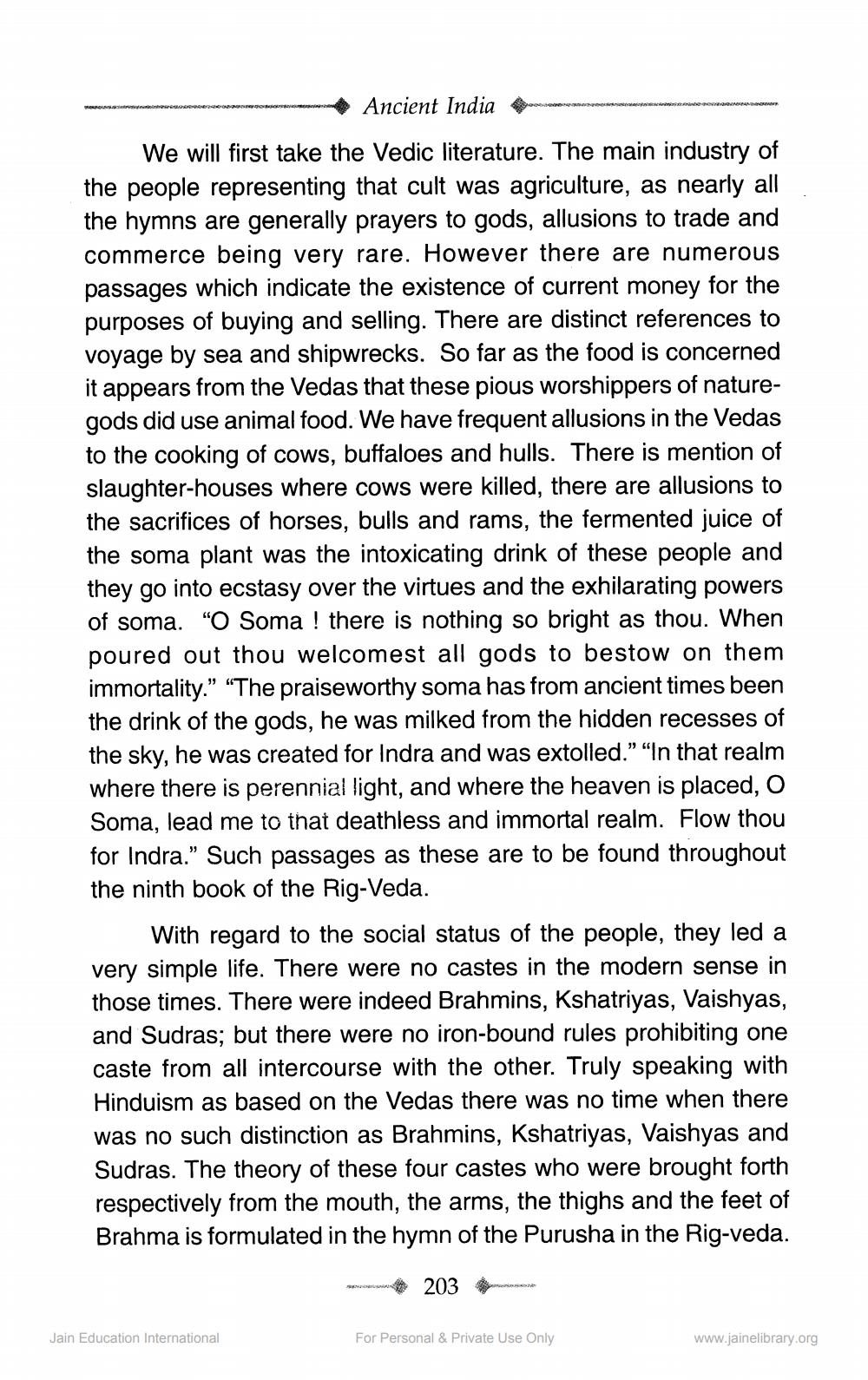________________
Ancient India
We will first take the Vedic literature. The main industry of the people representing that cult was agriculture, as nearly all the hymns are generally prayers to gods, allusions to trade and commerce being very rare. However there are numerous passages which indicate the existence of current money for the purposes of buying and selling. There are distinct references to voyage by sea and shipwrecks. So far as the food is concerned it appears from the Vedas that these pious worshippers of naturegods did use animal food. We have frequent allusions in the Vedas to the cooking of cows, buffaloes and hulls. There is mention of slaughter-houses where cows were killed, there are allusions to the sacrifices of horses, bulls and rams, the fermented juice of the soma plant was the intoxicating drink of these people and they go into ecstasy over the virtues and the exhilarating powers of soma. “O Soma ! there is nothing so bright as thou. When poured out thou welcomest all gods to bestow on them immortality.” “The praiseworthy soma has from ancient times been the drink of the gods, he was milked from the hidden recesses of the sky, he was created for Indra and was extolled.” “In that realm where there is perennial light, and where the heaven is placed, O Soma, lead me to that deathless and immortal realm. Flow thou for Indra.” Such passages as these are to be found throughout the ninth book of the Rig Veda.
With regard to the social status of the people, they led a very simple life. There were no castes in the modern sense in those times. There were indeed Brahmins, Kshatriyas, Vaishyas, and Sudras; but there were no iron-bound rules prohibiting one caste from all intercourse with the other. Truly speaking with Hinduism as based on the Vedas there was no time when there was no such distinction as Brahmins, Kshatriyas, Vaishyas and Sudras. The theory of these four castes who were brought forth respectively from the mouth, the arms, the thighs and the feet of Brahma is formulated in the hymn of the Purusha in the Rig-veda.
Teen 203
Jain Education International
For Personal & Private Use Only
www.jainelibrary.org




